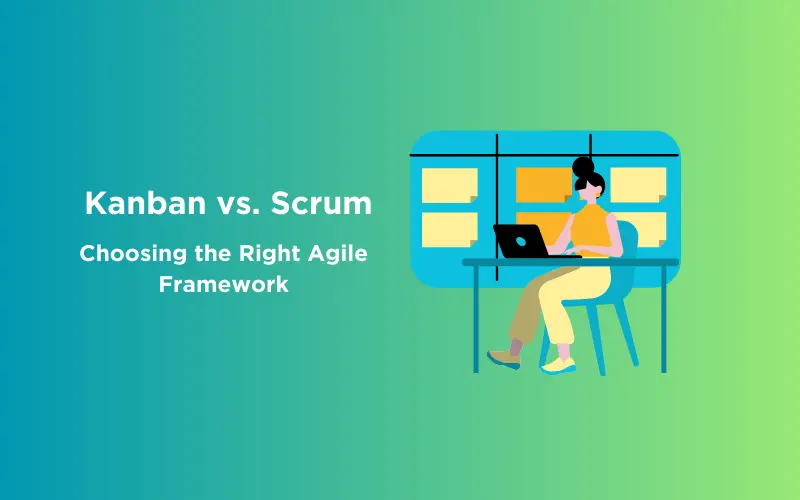
Kanban vs. Scrum: Choosing the Right Agile Framework for Your Project
Nov 13, 2024 5 Min Read 3103 Views
(Last Updated)
Imagine you’re building a house. If you use the wrong tools, it’s going to take longer, maybe fall apart, and leave everyone pretty frustrated. The same goes for picking a project management method. If it doesn’t fit the project, things can get messy, deadlines might be missed, and nobody likes that.
Meet Kanban and Scrum, two frameworks in the Agile world. We will battle it out as Kanban vs. Scrum and will dig into what makes each of them special. Kanban loves a continuous flow, like a gentle stream, while Scrum is more about sprinting, like a relay race with organized stops.
In this blog, we’re going to break down these methods, show you what makes them tick, and help you figure out which one might be your project’s perfect match. Think of it as your backstage pass to Agile, where we make Kanban and Scrum less like jargon and more like helpful friends for your projects. Ready to dive in? Let’s roll!
Table of contents
- Kanban
- Kanban Board
- Work-in-Progress (WIP) Limits
- Continuous Delivery
- Use Cases and Scenarios Where Kanban is Most Effective
- Scrum
- Scrum Roles
- Sprint Planning, Review, and Retrospective
- Scrum Artifacts
- Use Cases and Scenarios Where Scrum is Most Effective
- Kanban vs. Scrum: Key Differences
- A. Project Structure
- B. Roles and Responsibilities
- C. Planning and Prioritization
- D. Work-in-progress (WIP)
- Kanban vs. Scrum: Similarities and Overlapping Concepts
- A. Agile Mindset and Values
- B. Visual Management and Transparency
- C. Continuous Improvement and Adaptability
- Kanban vs. Scrum: Choosing the Right Framework
- A. Considerations for Selecting Between Kanban and Scrum
- B. Decision Factors Based on Project Type, Team Size, and Organizational Culture
- C. Real-World Examples of Successful Implementations for Each Framework
- Conclusion
- FAQs
- What's the main difference between Kanban and Scrum, and how do I know which one is right for my project?
- Can I use a combination of Kanban and Scrum elements for my project, or do I need to stick to just one framework?
- How do I convince my team to transition to an agile framework like Kanban or Scrum, and what challenges should I be prepared for during the transition?
Kanban
Kanban originated in Japan as a scheduling system for Toyota’s production line in the 1940s. It was later popularized by David J. Anderson in the software development context. The core principles of Kanban include visualizing the workflow, limiting work-in-progress, making policies explicit, managing flow, and continually improving.
Also, if you want to explore Agile Fundamentals through a Self-paced course, try GUVI’s Figma certification course.
Kanban Board
- A visual representation of the workflow, usually consisting of columns representing different stages of the process (e.g., to-do, in progress, done).
- Each task or work item is represented by a card, moving from one column to the next as it progresses through the workflow.
Work-in-Progress (WIP) Limits
- Constraints on the number of tasks allowed in each stage of the workflow simultaneously.
- Designed to optimize flow and prevent overloading team members, ensuring a smooth and efficient process.
Continuous Delivery
- Emphasizes delivering small increments of value to customers continuously.
- As tasks are completed, new ones are pulled into the workflow, allowing for a steady and constant delivery of features or products.
Use Cases and Scenarios Where Kanban is Most Effective
Software Development
- Particularly effective for teams with variable workloads or frequent changes in priorities.
- Allows for flexibility in responding to changing requirements.
Support and Operations
- Useful for managing and resolving support tickets, where tasks vary in complexity and urgency.
- Ensures a steady and predictable flow of work.
Marketing and Creative Teams
- Ideal for managing various marketing campaigns or creative projects with different stages and dependencies.
- Provides visibility into the work process.
IT Operations
- Helps manage tasks related to system maintenance, updates, and infrastructure changes.
- Enables teams to balance planned work with unforeseen incidents.
Product Development
- Useful in product management to visualize and manage the development lifecycle.
- Supports adaptability to changes in user requirements.
Also Read: Top 45 JIRA Interview Questions and Answers
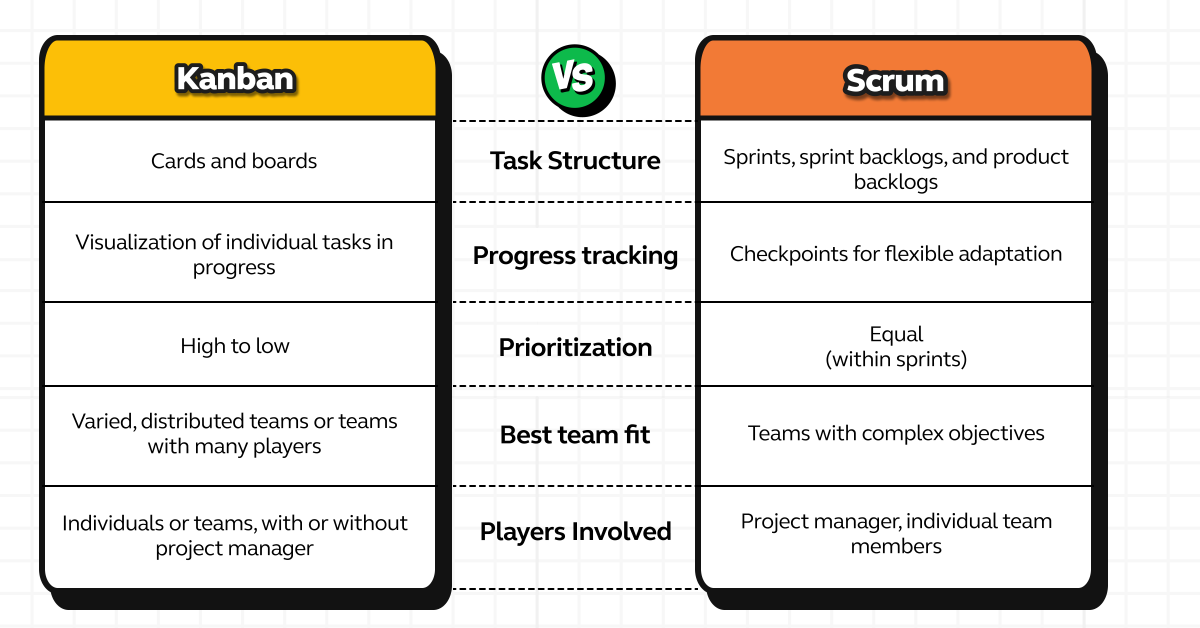
Scrum
Scrum was developed in the early 1990s by Jeff Sutherland, Ken Schwaber, and Mike Beedle. It is an agile framework for managing and developing complex products. The principles of Scrum are based on the Agile Manifesto and emphasize flexibility, collaboration, and delivering incremental value.
Scrum Roles
Product Owner: Represents the stakeholders and is responsible for maximizing the value of the product by managing the product backlog.
Scrum Master: Facilitates the Scrum process, removes impediments, and ensures that the team is adhering to Scrum principles and practices.
Development Team: A cross-functional group responsible for delivering potentially shippable increments of the product at the end of each sprint.
Sprint Planning, Review, and Retrospective
Sprint Planning: At the beginning of each sprint, the team plans the work to be done during the sprint, defining a sprint goal and selecting tasks from the product backlog.
Sprint Review: At the end of each sprint, the team demonstrates the work completed to stakeholders and collects feedback for future iterations.
Sprint Retrospective: A meeting after the sprint review where the team reflects on the sprint, identifies what went well and what could be improved, and makes adjustments for the next sprint.
Scrum Artifacts
Product Backlog: A prioritized list of features, enhancements, and bug fixes that make up the product. Managed by the Product Owner.
Sprint Backlog: The subset of the product backlog selected for the current sprint. It represents the work that the development team plans to complete during the sprint.
Burndown Charts: Visual representation of work completed over time, helping teams track progress during a sprint.
Use Cases and Scenarios Where Scrum is Most Effective
Software Development
- Particularly effective for projects with changing requirements or a need for regular releases.
- Facilitates collaboration and adaptability.
Product Development
- Ideal for managing the development of a product with a focus on delivering incremental value.
- Supports continuous improvement through regular feedback loops.
Cross-Functional Teams
- Suited for teams with diverse skills, allowing for flexibility and collaboration.
- Encourages a collective approach to problem-solving.
Dynamic Environments
- Effective in industries where market conditions and customer needs change rapidly.
- Enables quick adaptation to emerging requirements.
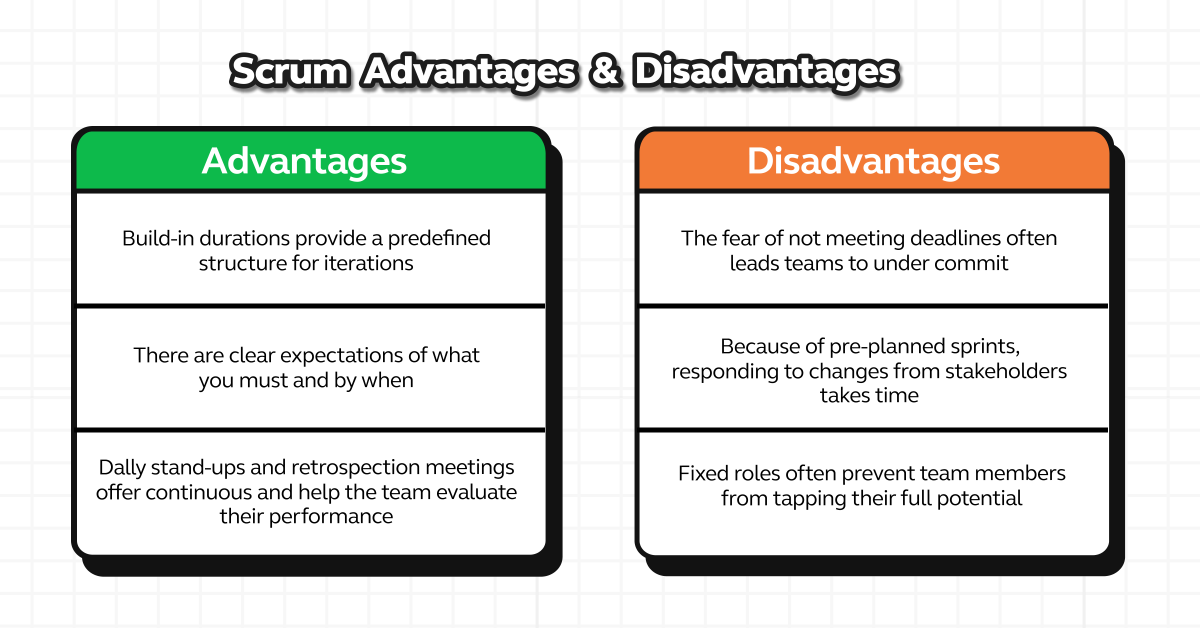
Kanban vs. Scrum: Key Differences
The key differences between Kanban and Scrum are as follows:
A. Project Structure
Kanban: Emphasizes a continuous flow of work, allowing items to be pulled from a backlog and completed as capacity allows. There are no predefined timeboxes for when work must be completed.
Scrum: Organizes work into fixed-length iterations called sprints (usually 2-4 weeks). During each sprint, a potentially shippable increment of the product is developed.
B. Roles and Responsibilities
Kanban: Allows for flexibility in team roles. Team members can pick up tasks based on capacity and expertise without predefined roles like a Scrum Master or Product Owner.
Scrum: Defines specific roles such as Product Owner, Scrum Master, and Development Team, each with distinct responsibilities and expectations.
C. Planning and Prioritization
Kanban: Prioritization is dynamic, and work is pulled based on real-time capacity and demand. The backlog is continuously refined, and items can be reprioritized as needed.
Scrum: Sprint planning involves committing to a fixed set of tasks for the sprint. The sprint backlog is fixed for the duration, and changes are generally not made during the sprint.
D. Work-in-progress (WIP)
Kanban: Places a strong emphasis on limiting work-in-progress to optimize flow and reduce multitasking. WIP limits are set for each stage of the process.
Scrum: Focuses on delivering a fixed set of committed work during the sprint, and changes to the sprint backlog are generally discouraged once the sprint begins.
Understanding these key differences can help teams choose the framework that best aligns with their project requirements and organizational goals.
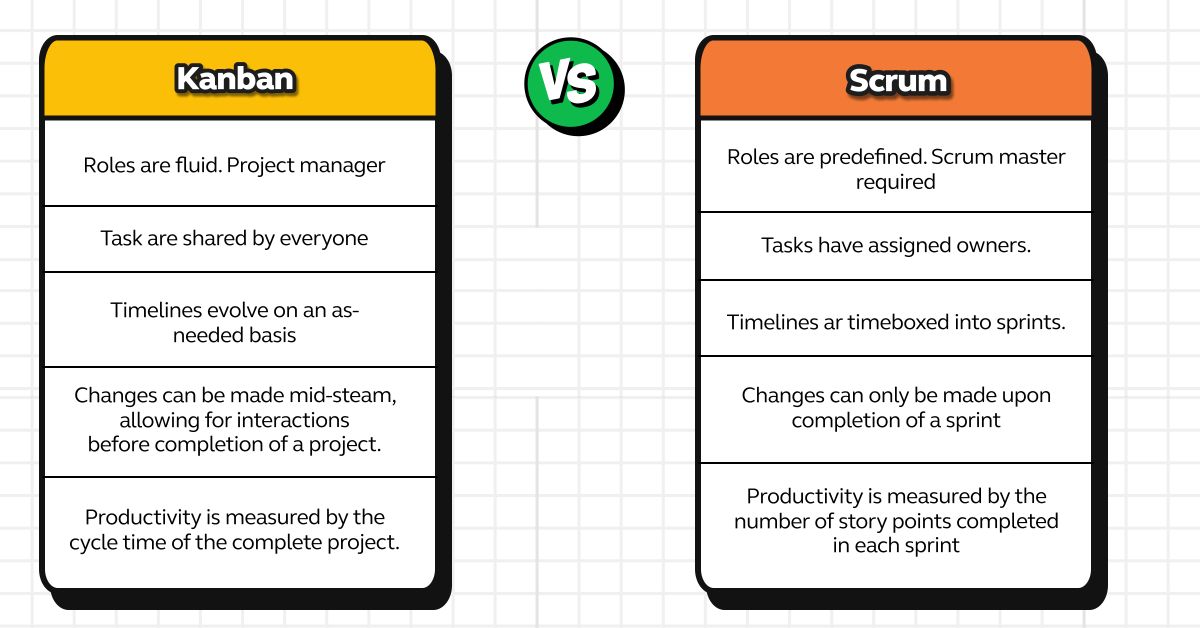
Kanban vs. Scrum: Similarities and Overlapping Concepts
The following are a few similarities and overlapping concepts between Kanban and Scrum:
A. Agile Mindset and Values
Agile Mindset: Both Kanban and Scrum share the foundational Agile mindset, which values collaboration, customer feedback, and responding to change over following a rigid plan.
Agile Values: Both frameworks align with the four Agile values outlined in the Agile Manifesto: individuals and interactions over processes and tools, working solutions over comprehensive documentation, customer collaboration over contract negotiation, and responding to change over following a plan.
B. Visual Management and Transparency
Visual Management: Both Kanban and Scrum emphasize the use of visual tools to represent work, progress, and impediments. Kanban boards and Scrum boards are examples of visual management tools.
Transparency: Both frameworks promote transparency by making work visible to all team members, stakeholders, and customers. This visibility fosters open communication and understanding of the work process.
C. Continuous Improvement and Adaptability
Continuous Improvement: Both Kanban and Scrum encourage teams to regularly reflect on their processes and seek ways to improve. Kanban’s principle of continuous improvement aligns with Scrum’s Sprint Retrospective, where teams reflect on their performance and adjust their practices.
Adaptability: Both frameworks are designed to be adaptable to change. Kanban allows for immediate adjustments to priorities, while Scrum accommodates changes between sprints and during Sprint Review and Sprint Retrospective meetings.
Understanding these shared principles helps teams appreciate the common ground between Kanban and Scrum, making it easier to integrate aspects of both frameworks or transition from one to the other based on project needs.
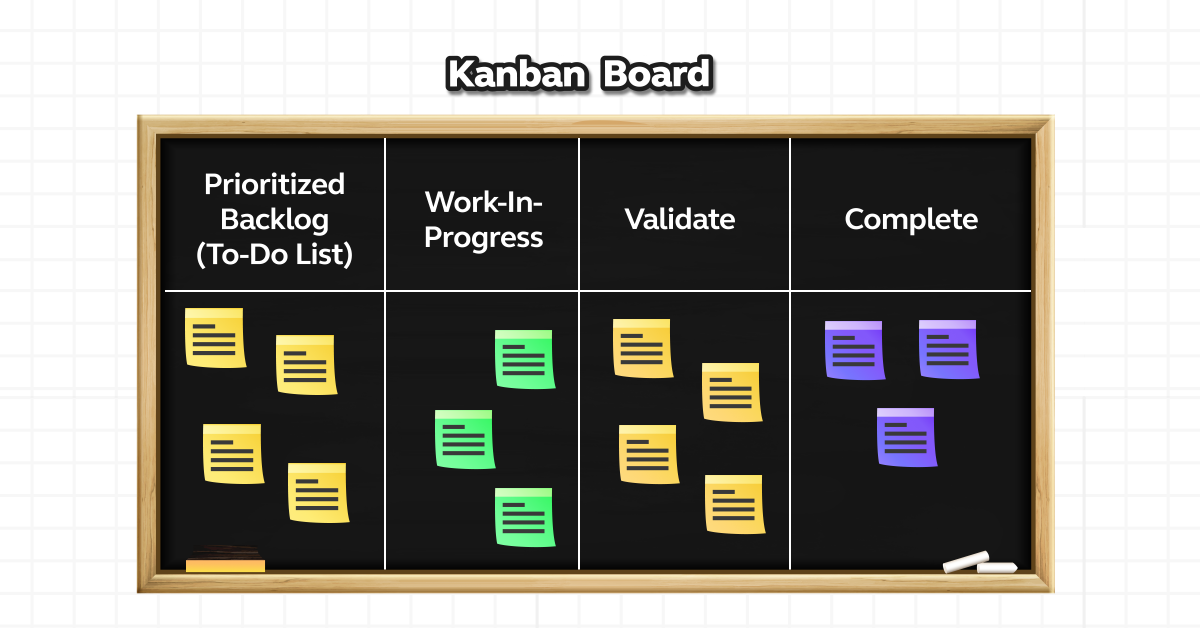
Kanban vs. Scrum: Choosing the Right Framework
The following are a few pointers that will help you in choosing the right agile framework for your project:
A. Considerations for Selecting Between Kanban and Scrum
Nature of Work
Kanban: Suitable for teams with a continuous flow of work and where priorities may change frequently.
Scrum: Ideal for projects with well-defined goals and a fixed scope, often in a product development context.
Predictability vs. Flexibility
Kanban: Offers flexibility by adapting to changing priorities in real-time.
Scrum: Provides predictability through fixed-length sprints, making it easier to plan and forecast.
Team Structure
Kanban: Fits well with cross-functional teams and environments where roles can be flexible.
Scrum: Defines specific roles, making it suitable for teams with clearly defined responsibilities.
B. Decision Factors Based on Project Type, Team Size, and Organizational Culture
Project Type
Kanban: Suited for maintenance work, support teams, and projects with varying priorities.
Scrum: Effective for new product development, where goals can be set for each sprint.
Team Size
Kanban: Works well for both small and large teams due to its flexibility.
Scrum: Often recommended for smaller teams, but can scale with additional frameworks for larger projects (e.g., Nexus or LeSS).
Organizational Culture
Kanban: Fits well in organizations that value continuous improvement and flexibility.
Scrum: Suits organizations that prefer a structured approach with fixed-length iterations.
C. Real-World Examples of Successful Implementations for Each Framework
Kanban
Microsoft Azure DevOps: Microsoft uses Kanban boards to manage its development processes, providing visibility into tasks and workflow.
Toyota Production System: Originating from manufacturing, Toyota’s use of Kanban principles has influenced its successful application in software development.
Scrum
Spotify: The music streaming service uses Scrum to organize its engineering and development teams, fostering a culture of collaboration and innovation.
Salesforce: Salesforce, a leading CRM platform, has successfully implemented Scrum to enhance its product development and delivery.
Also Read: What to Learn to Become a DevOps Engineer?
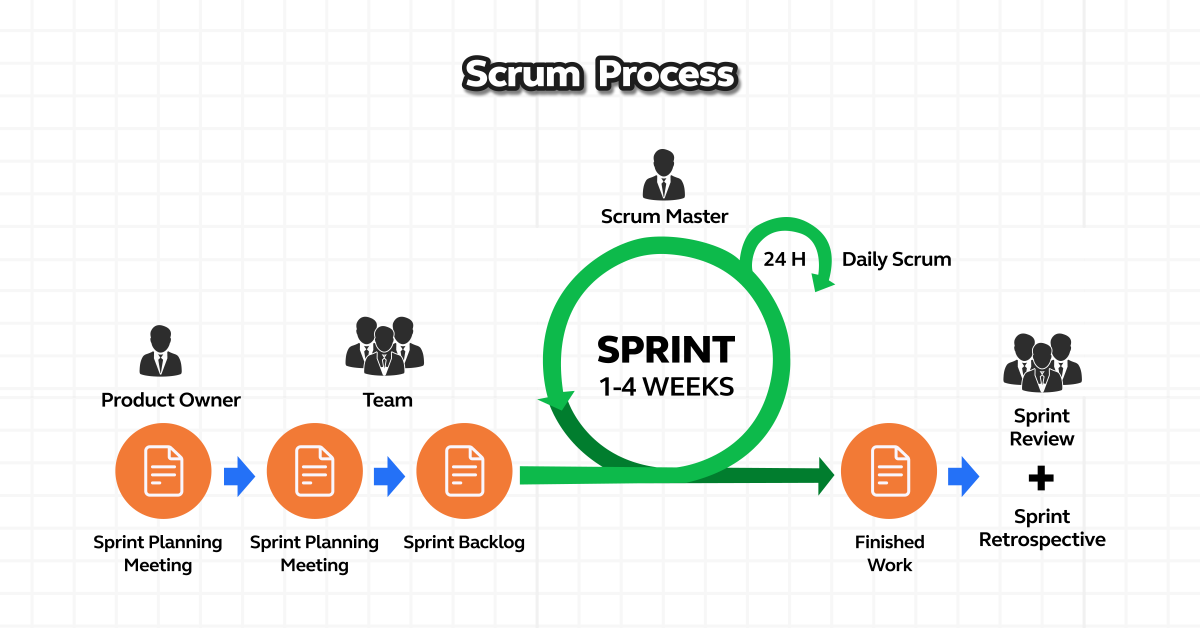
Alternatively, if you would like to explore SAFe Agile Certification Course and Self Paced Courses of GUVI’s Figma certification course.
Conclusion
When deciding what’s right for your project, think about what makes your team unique. Consider the size of your team, the type of work you do, and the vibe of your workplace.
And hey, don’t forget to learn from others! See what successful teams have done with Kanban and Scrum. Borrow their good ideas and make them your own.
As you dive into the world of agile project management, remember that the journey is just as important as the destination. Be open to trying new things, don’t be afraid to switch things up, and enjoy the ride towards success!
FAQs
Kanban and Scrum are both agile frameworks, but they have distinct approaches. The key difference lies in their project structures. Kanban offers a continuous flow of work without fixed timeframes, allowing for flexibility in prioritization.
On the other hand, Scrum organizes work into fixed-length sprints, providing a more structured and predictable approach. To choose the right one, consider your project type; if it’s more adaptive, go for Kanban, while Scrum suits projects with a well-defined scope and goals.
Absolutely! Many teams find success in combining elements of Kanban and Scrum to create a hybrid approach that suits their specific needs.
For instance, you might use Kanban’s continuous flow for ongoing tasks but adopt Scrum’s sprint planning for specific project phases. The key is to experiment and find a blend that works best for your team and project requirements.
Convincing your team to transition to an agile framework involves highlighting the benefits such as increased flexibility, improved collaboration, and faster delivery of value. Start with a small pilot project to demonstrate the positive impact of the chosen framework.
However, be prepared for challenges like resistance to change, the need for team training, and potential disruptions to the existing workflow. Communication, training, and a phased approach can help ease the transition and address challenges effectively.





















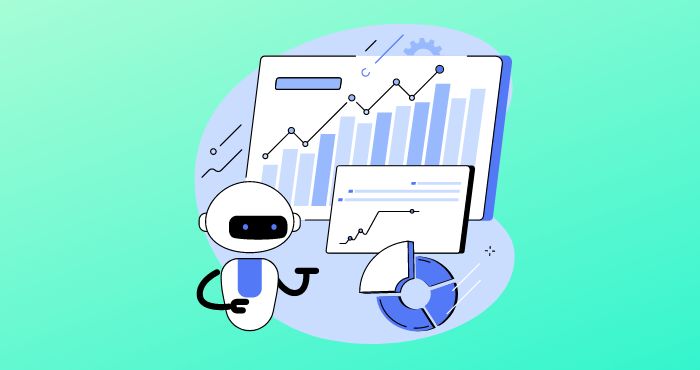

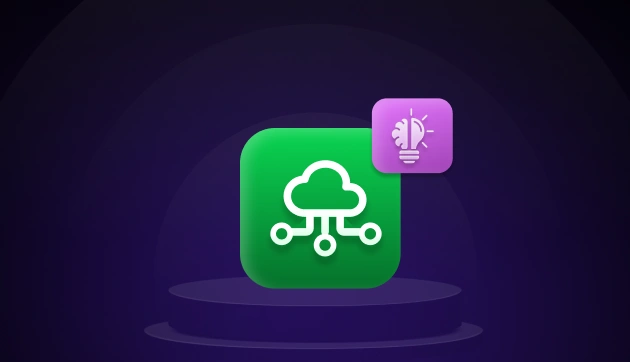




![Project-Based Learning: Smart Ideas and Important Tips To Implement It [2025] 12 Feature Image - Project-Based Learning](https://www.guvi.in/blog/wp-content/uploads/2024/05/feature_image.webp)
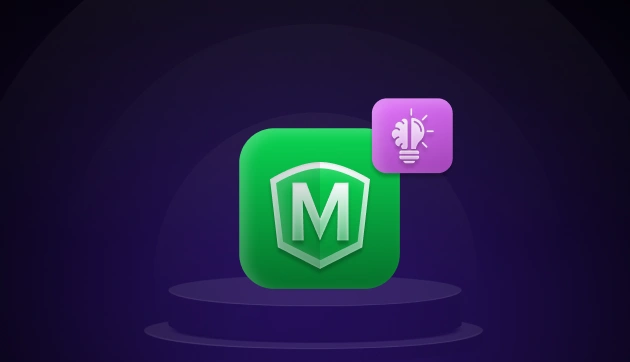

Did you enjoy this article?